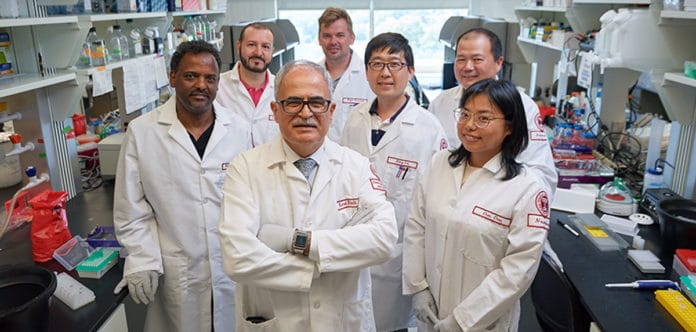Existing HIV treatment focuses on the use of antiretroviral therapy (ART). ART suppresses HIV replication however does not dispose of the virus from the body. In this way, ART isn’t a remedy for HIV, and it requires long-lasting use. If it stopped, HIV rebounds, renew the replication and energize the development of AIDS. HIV bounce back is directly credited to the capacity of the virus to integrate its DNA sequence into the genomes of cells of the immune system.
For the first ever time, scientists at the Lewis Katz School of Medicine at Temple University in collaboration with the University of Nebraska Medical Center (UNMC) have eliminated replication-competent HIV-1 DNA – the virus responsible for AIDS – from the genomes of living animals.
In a study involving 29 mice, in some of the animals, the team used a combination of a modified ARV treatment to keep the virus at low activity levels, along with a powerful gene-editing technique that snipped out HIV genes from infected cells. In various tests, the scientists could find no trace of the virus in 30% of the animals.
In their previous study, scientists used the CRISPR-Cas9 technique and developed a novel gene editing and gene therapy delivery system to remove HIV DNA from genomes harboring the virus.
When tested on mice, scientists found that their gene editing system could proficiently excises large fragments of HIV DNA from infected cells, thus impacting viral gene expression. But, like ART, the technique cannot completely eliminate HIV on its own.
In this new study, scientists combined their gene editing system with a recently developed therapeutic strategy known as long-acting slow-effective release (LASER) ART.
LASER ART targets viral sanctuaries and maintains HIV replication at low levels for broadened timeframes, decreasing the recurrence of ART administration. The long-lasting medications were made conceivable by pharmacological changes in the chemical structure of the antiretroviral drugs.
The modified drug was packaged into nanocrystals, which readily distribute to tissues where HIV is likely to be lying dormant. From there, the nanocrystals, stored within cells for weeks, slowly release the drug.
Scientists tested their idea on mice engineered to produce human T cells susceptible to HIV infection, permitting long-term viral infection and ART-induced latency. Once the infection was established, mice were treated with LASER ART and subsequently with CRISPR-Cas9. At the end of the treatment period, mice were examined for viral load. Analyses revealed complete elimination of HIV DNA in about one-third of HIV-infected mice.
Kamel Khalili, Ph.D., Laura H. Carnell Professor and Chair of the Department of Neuroscience said, “We wanted to see whether LASER ART could suppress HIV replication long enough for CRISPR-Cas9 to completely rid cells of viral DNA.”
“The big message of this work is that it takes both CRISPR-Cas9 and virus suppression through a method such as LASER ART, administered together, to produce a cure for HIV infection. We now have a clear path to move ahead to trials in non-human primates and possibly clinical trials in human patients within the year.”
Other researchers contributing to the study include Rafal Kaminski, Ramona Bella, Taha M. Ahooyi, Chen Chen, Pietro Mancuso, Rahsan Sariyer, Pasquale Ferrante, Martina Donadoni, Jake A. Robinson, Ilker K. Sariyer, Tricia H. Burdo, Won-Bin Young, Shohreh Amini, Jennifer Gordon, and Jeffrey M. Jacobson, Department of Neuroscience, Lewis Katz School of Medicine at Temple University; Prasanta K. Dash, Hang Su, Saumi Mathews, Brady Sillman, Zhiyi Lin, James R. Hilaire, Mary Banoub, Monalisha Elango, R. Lee Mosley, Larisa Y. Poluektova, JoEllyn McMillan, Aditya N. Bade, and Santhi Gorantla, Department of Pharmacology and Experimental Neuroscience, UNMC; and Nagsen Gautam, Department of Pharmaceutical Sciences, College of Pharmacy, UNMC.
The research was supported in part by grants awarded by the National Institutes of Health to Temple University and to UNMC, including R01MH104147, R01NS36126, R01NS034239, P01NS43985, P30MH062261, P30AI078498, R01AG043540, P30MH092177, P01DA037830, R01MH110360, R01DA013137, R01NS087971, R24OD018546, and R01DA42706.
The study, reported online July 2 in the journal Nature Communications, marks a critical step toward the development of a possible cure for human HIV infection.
